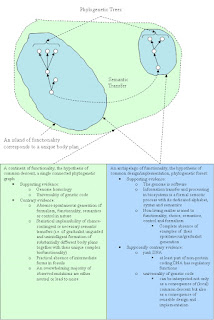In the picture below I present some of the key points in the natural history of life which abiogenesis and the current theories of (undirected) evolution must be able to explain in detail today. A detailed explanation (rigorous, scientific explanations with figures, not the usual evolutionary story-telling) of any of those milestones appears to be a major issue for any hypothesis or theory based entirely on non-intelligent mechanisms, given the statistical implausibility of an origin involving spontaneous and law-like causal factors alone.
Now, ID posits that for each such milestone, a significant amount of functional information is necessary, while the only statistically plausible cause of such is intelligence, on the gamut of the available probabilistic resources in the entire universe. Having said this, to date the existence of significant amounts of functional information in the context of biosystems has been credibly shown only for functional protein domains, the biochemical building blocks of life [Durston et al. 2007].
Nonetheless, with the rise of ID, evolutionary story-telling is no longer acceptable. Science requires rigour, concrete numbers and plausibility.
Bibliography
- Durston, K.K., D.K.Y. Chiu, D.L. Abel and J.T. Trevors (2007) Measuring the functional sequence complexity of proteins", Theoretical Biology and Medical Modelling 4:47. [doi:10.1186/1742-4682-4-47]











